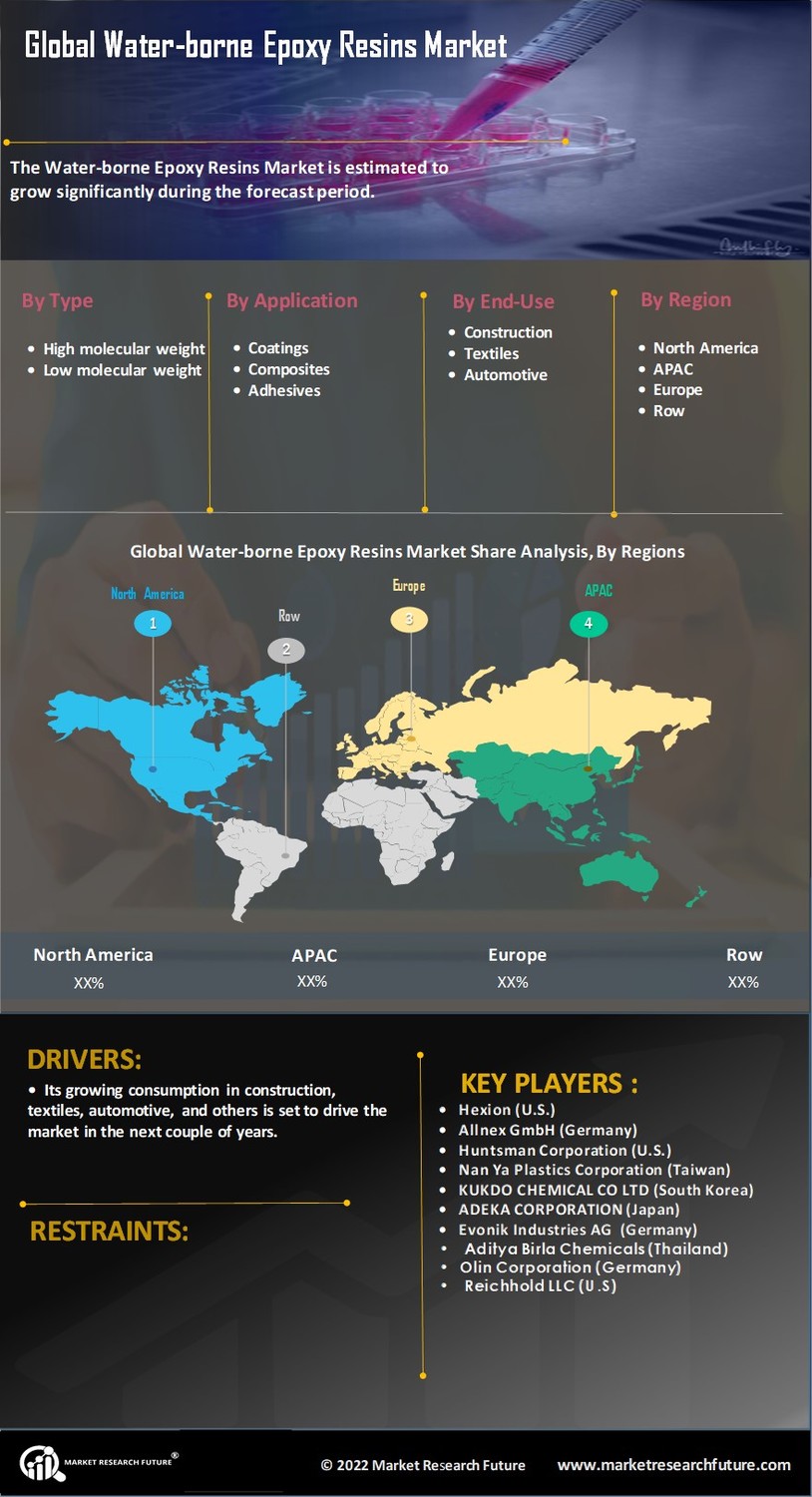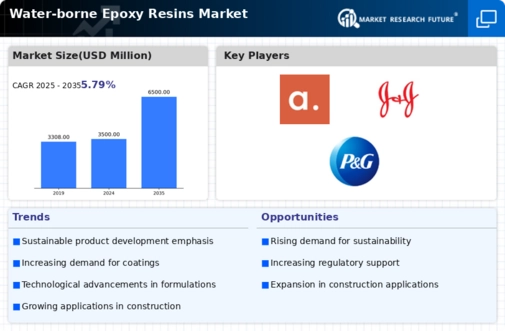Market Growth Projections
The Global Water-borne Epoxy Resins Market Industry is poised for substantial growth, with projections indicating a market size of 3500 USD Million in 2024 and an anticipated increase to 6500 USD Million by 2035. This growth trajectory reflects a compound annual growth rate of 5.79% from 2025 to 2035, driven by various factors such as rising demand for eco-friendly coatings, expansion in construction activities, and technological advancements in resin formulation. The market's evolution is indicative of a broader trend towards sustainable and high-performance materials across multiple industries.
Expansion in Construction Activities
The Global Water-borne Epoxy Resins Market Industry benefits from the ongoing expansion in construction activities worldwide. Urbanization and infrastructure development are driving the demand for durable and high-performance coatings, which water-borne epoxy resins provide. These resins are increasingly utilized in flooring, wall coatings, and protective finishes, enhancing the longevity and aesthetics of structures. The construction sector's growth contributes significantly to the market's expansion, with projections indicating a rise to 6500 USD Million by 2035. This trend underscores the essential role of water-borne epoxy resins in modern construction practices.
Growing Demand for Eco-Friendly Coatings
The Global Water-borne Epoxy Resins Market Industry experiences a notable surge in demand for eco-friendly coatings, driven by increasing environmental regulations and consumer preferences for sustainable products. Water-borne epoxy resins, known for their low volatile organic compound emissions, align with these trends, making them a preferred choice in various applications. This shift is particularly evident in the automotive and construction sectors, where companies are adopting greener alternatives. As a result, the market is projected to reach 3500 USD Million in 2024, reflecting a growing inclination towards environmentally responsible solutions.
Increased Application in Automotive Sector
The Global Water-borne Epoxy Resins Market Industry is experiencing increased application in the automotive sector, where manufacturers are seeking high-performance coatings that offer durability and aesthetic appeal. Water-borne epoxy resins are favored for their excellent adhesion properties and resistance to chemicals and weathering. As automotive production ramps up globally, the demand for these resins is expected to rise significantly. This trend is indicative of a broader shift towards advanced materials in automotive manufacturing, further solidifying the role of water-borne epoxy resins in meeting industry standards and consumer expectations.
Regulatory Support for Sustainable Practices
Regulatory frameworks promoting sustainable practices are shaping the Global Water-borne Epoxy Resins Market Industry. Governments worldwide are implementing stringent regulations aimed at reducing harmful emissions and promoting the use of environmentally friendly materials. These regulations incentivize manufacturers to transition towards water-borne epoxy resins, which comply with low VOC standards. As a result, the market is likely to witness a compound annual growth rate of 5.79% from 2025 to 2035. This regulatory support not only fosters innovation but also encourages a shift towards greener alternatives in various industrial applications.
Technological Advancements in Resin Formulation
Innovations in resin formulation are propelling the Global Water-borne Epoxy Resins Market Industry forward. Manufacturers are investing in research and development to enhance the performance characteristics of water-borne epoxy resins, such as adhesion, flexibility, and chemical resistance. These advancements enable the production of high-quality coatings that meet diverse industry requirements. For instance, the introduction of hybrid formulations that combine water-borne and solvent-based technologies is gaining traction. This technological evolution is expected to sustain the market's growth trajectory, as companies seek to improve product offerings and cater to evolving consumer demands.




